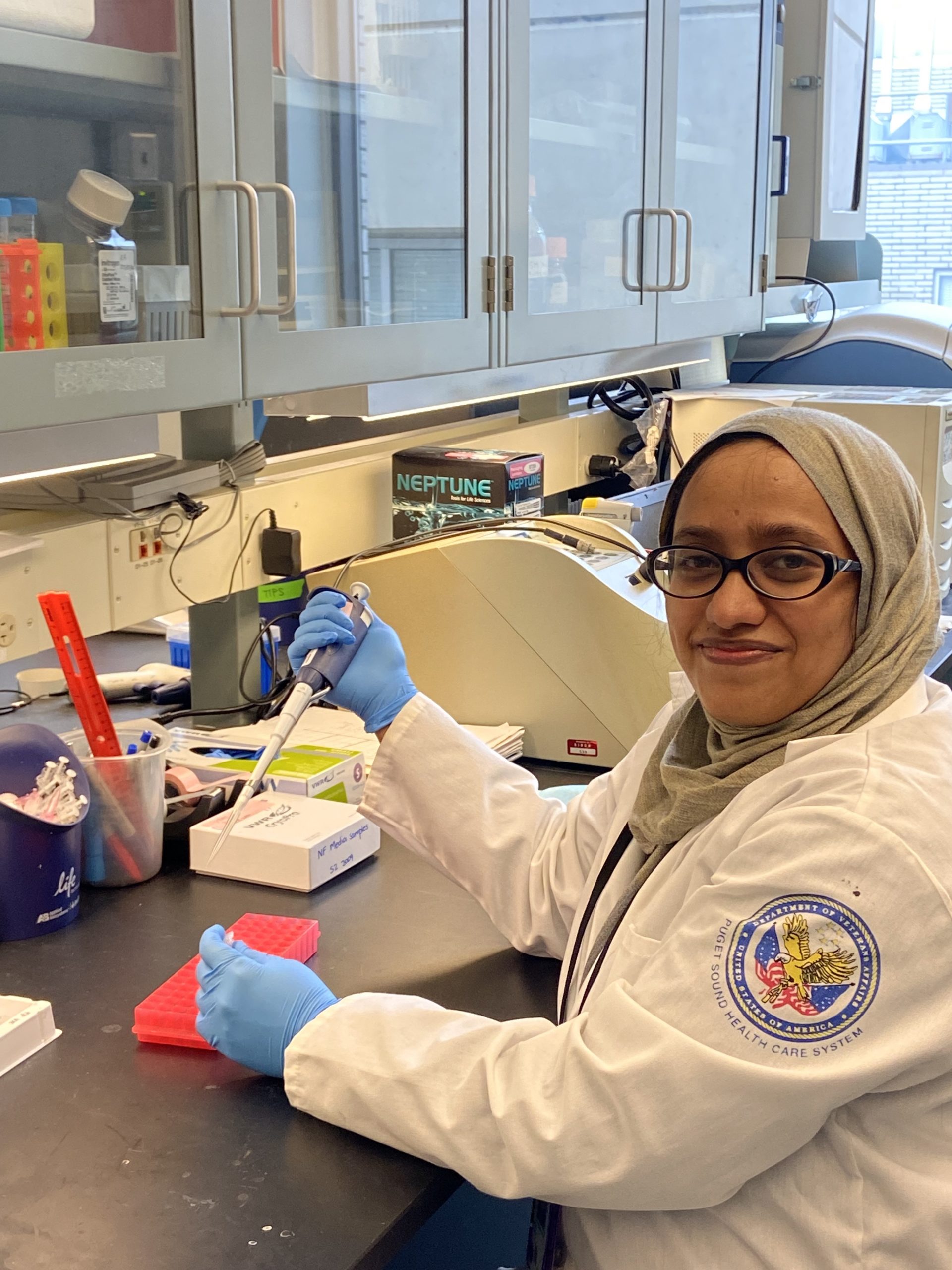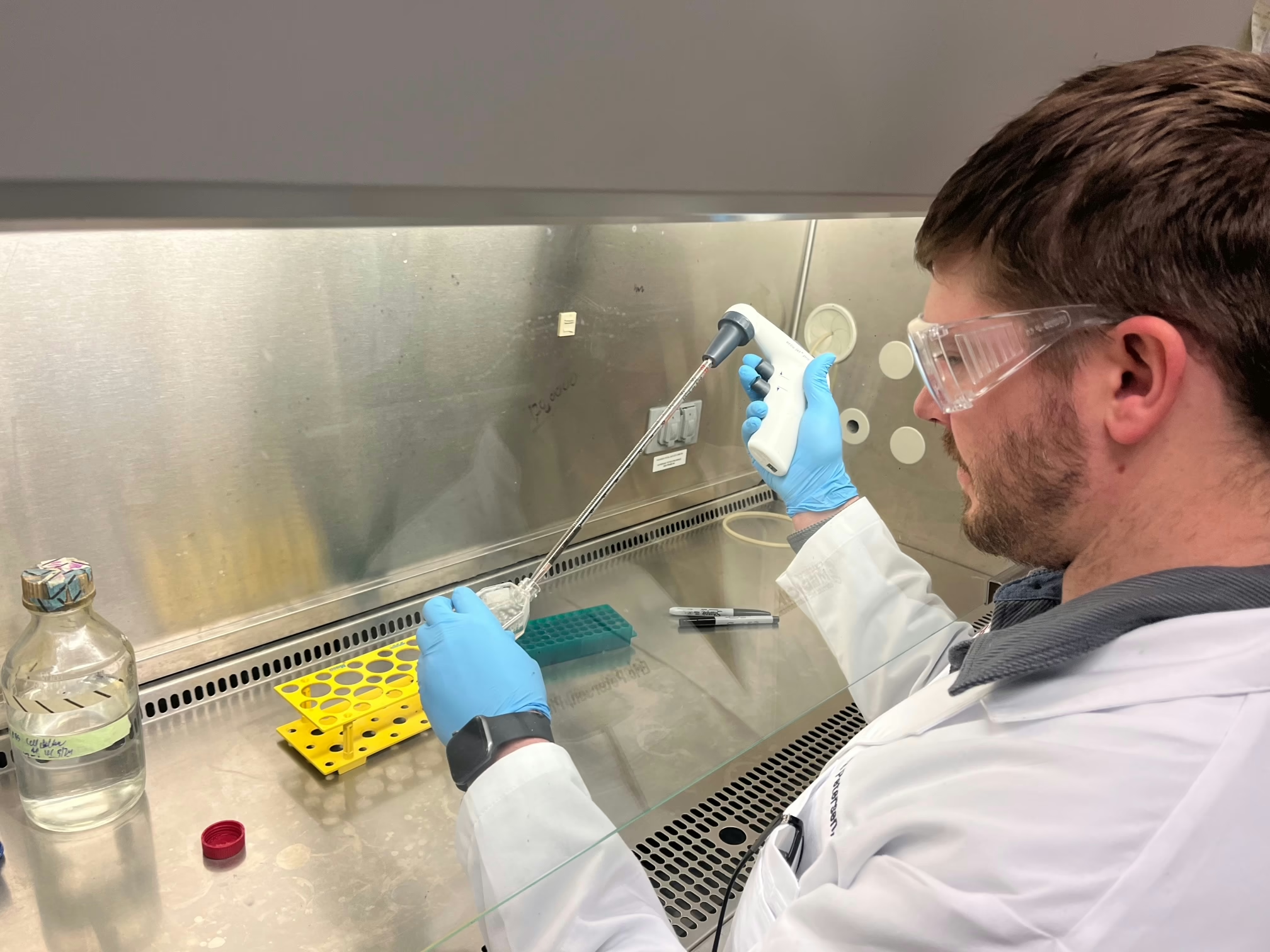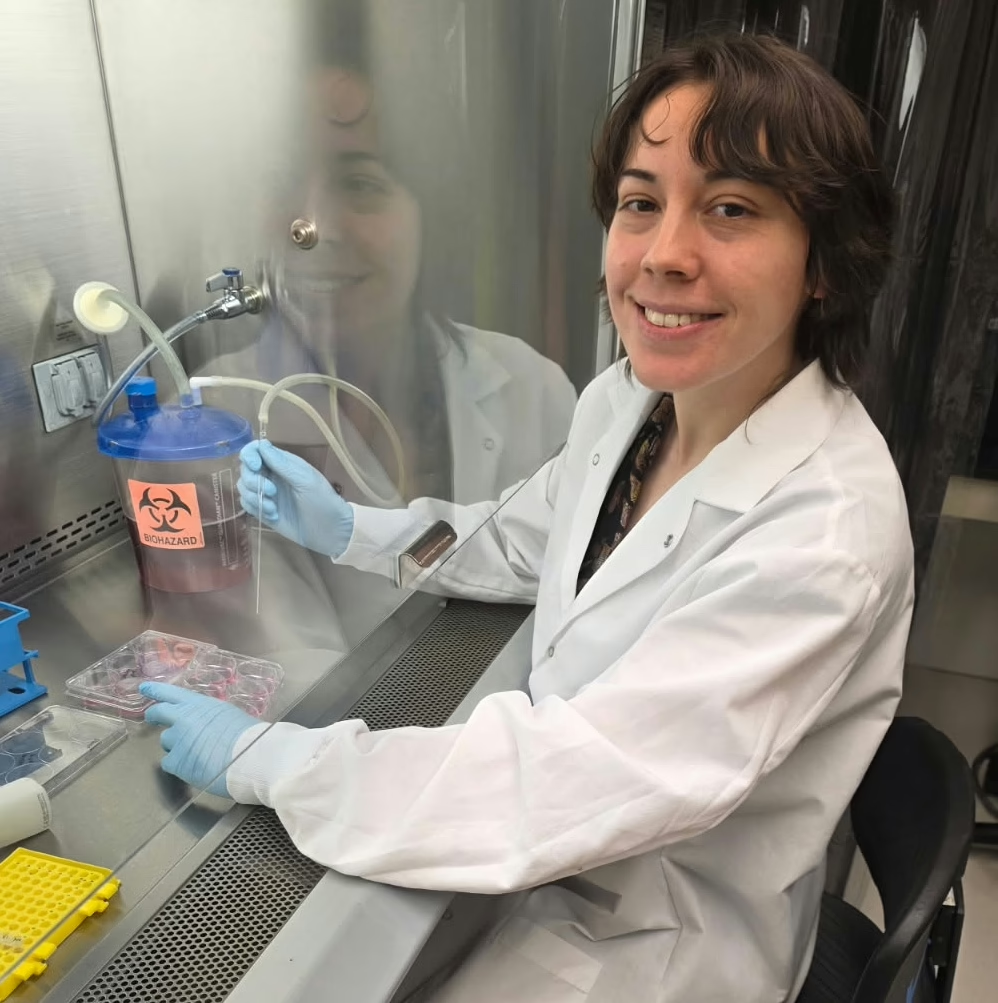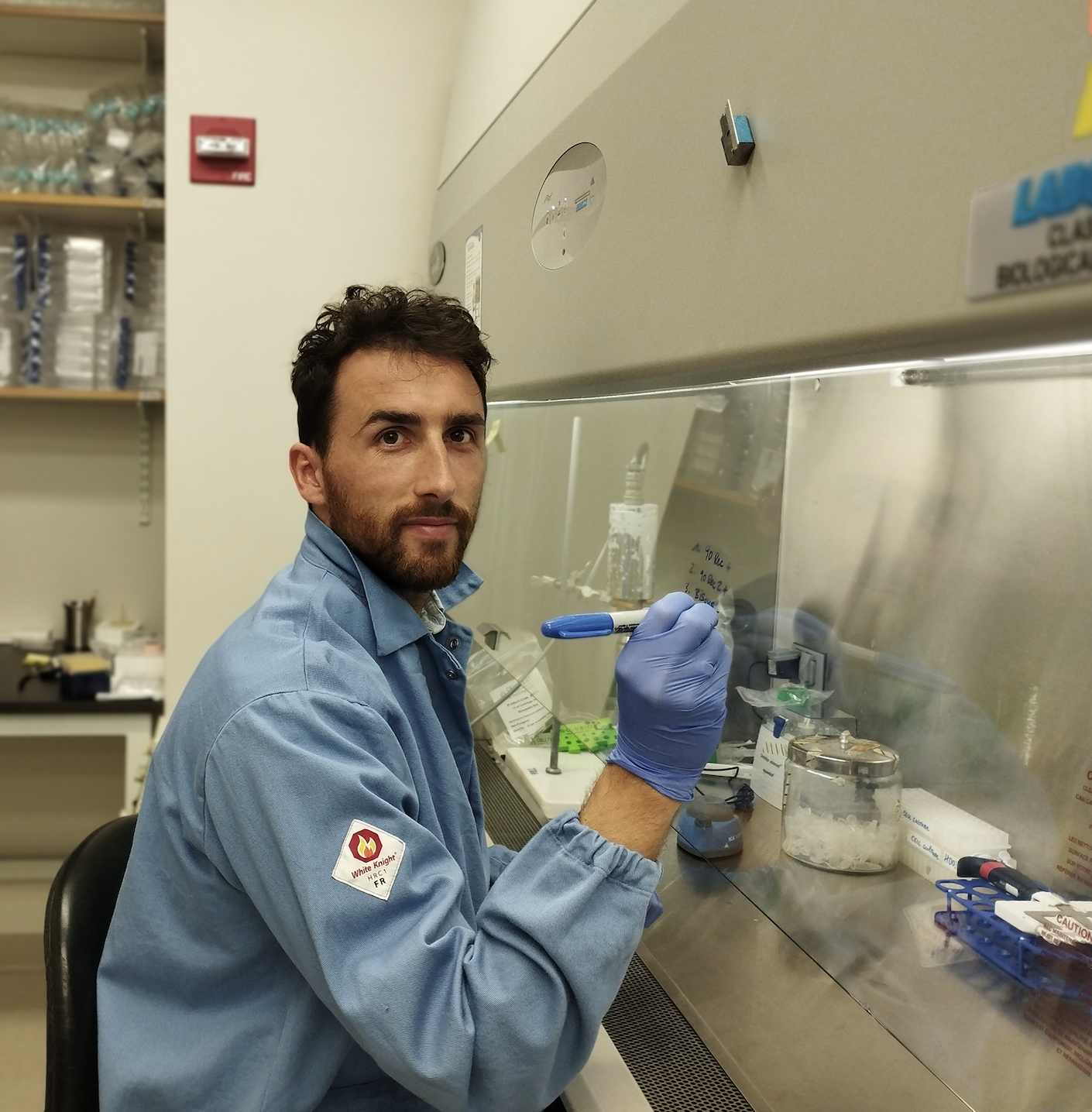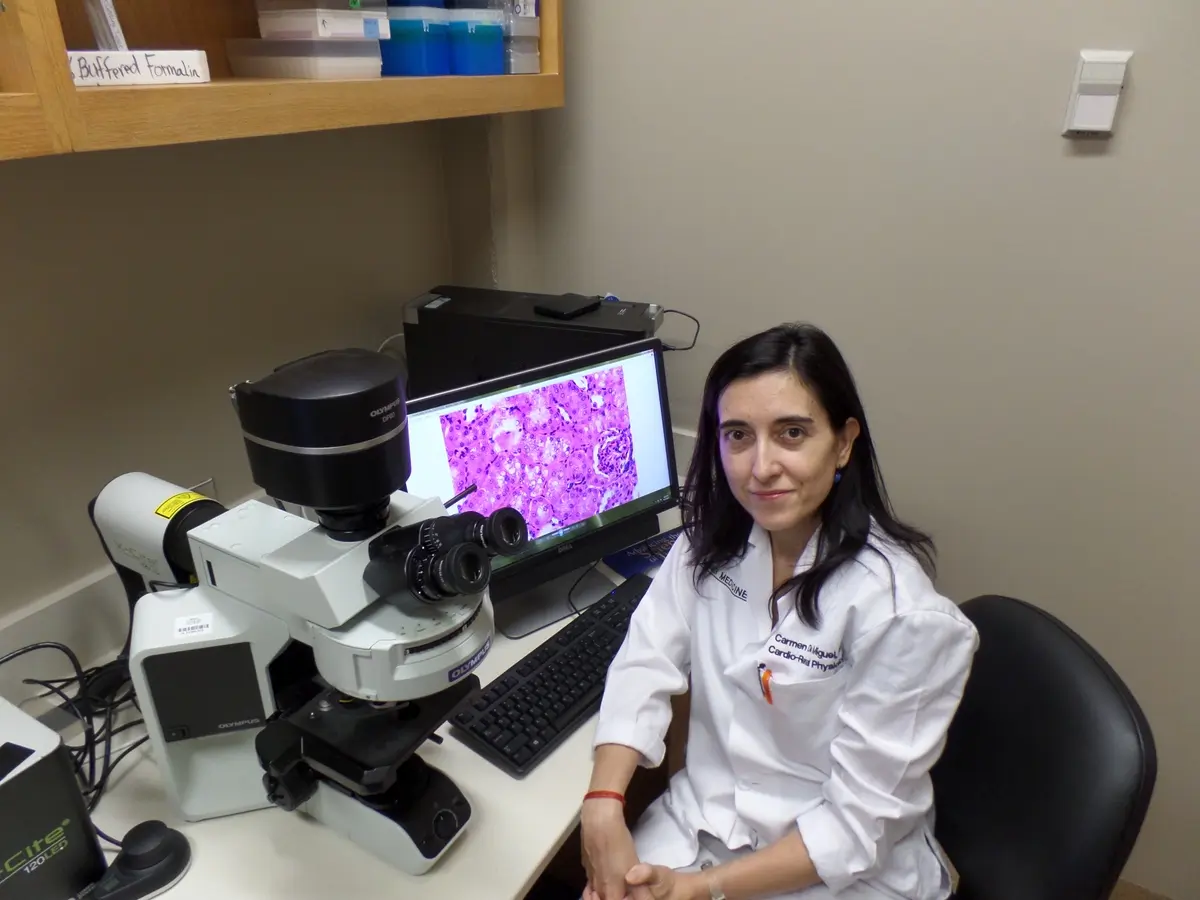Final Project Update
A single dose AAV-mPCSK9 (gain of function mutant) injection can induce moderate hypercholesterolemia in β-cell specific StAR null mice and feeding these mice a high cholesterol diet markedly increases the hypercholesterolemia.
We will increase the n in the in vivo study and determine whether StAR β-cell knockout prevents the β-cell dysfunction and improves glucose tolerance under hypercholesterolemic conditions. In addition, we will use this approach to induce hypercholesterolemia in our low-dose STZ-treated mouse model of early stage of T1D to examine whether hypercholesterolemia can exacerbate β-cell dysfunction in vivo.
We thank the Diabetes Research Connection for their support of our project. In addition, we are tremendously grateful to all the donors for their generous contributions to our research. We believe our studies have provided further insight into the role of cholesterol in the β-cell dysfunction of T1D. We hope that ultimately this will lead to approaches in people with early impairments of insulin secretion that will restore function and improve the quality of life in individuals with T1D.
6-Month Project Update
In the first 6 months of funding, we have focused our efforts largely on the in vitro experiments.
1) Generation of β-cell specific StAR knock-out mice: Our lab generated Starfl/fl mice in order to cross them with Ins1cre/cre mice to produce β-cell specific StAR knock-out mice. We previously verified that we successfully ablated StAR from β cells using the Cre-LoxP recombination strategy (Figure 1A). Therefore, in the last 6 months, we expanded the β-cell specific StAR knock-out mouse line (Figure 1B), which we will use for the in vitro and in vivo studies.
2) Ex vivo treatment of islets from β-cell specific StAR knock-out mice with cholesterol: After confirming a reduction of StAR mRNA expression in islets from β-cell specific StAR knock-out mice (Figure 2A), we treated islets with vehicle or 0.5 mM cholesterol for 24 h to evaluate changes in total islet cholesterol. Our data show that addition of exogenous cholesterol increased total islet cholesterol levels in both β-cell specific StAR knock-out and control islets (Figure 2B). In addition, StAR mRNA levels were elevated upon cholesterol accumulation in control, but not in β-cell specific StAR knock-out islets (Figure 2C), the latter suggesting no compensatory upregulation of StAR in non β-cells of the islet.
3) Development of a model of early-stage T1D: In the last 6 months, we have been working on developing a mouse model of early-stage T1D, wherein mice will exhibit mild β-cell dysfunction and/or loss before apparent hyperglycemia. We performed a pilot study in lean C57BL/6J male mice that received once daily i.p. injections of 1 of 3 low doses of streptozotocin (STZ; 30, 55 or 75 mg/kg body weight) for 3 consecutive days. We measured fed plasma glucose levels before and 4 weeks after the STZ injections, after which we isolated islets for measurement of glucose-stimulated insulin secretion (GSIS) and insulin content. For the 30 and 55 mg/kg STZ doses, our data suggest that 30 mg/kg but not 55 mg/kg STZ results in the maintenance of both normal blood glucose (Figure 3A) and GSIS (Figure 3B, 3D). In contrast, insulin content is significantly reduced in mice treated with 30 mg/kg STZ (Figure 3C), suggesting there is some loss of β cells. Similarly, insulin content is reduced in mice treated with 55 mg/kg STZ (Figure 3C), resulting in levels significantly lower than that observed in islets from 30 mg/kg STZ-treated mice (Figure 3C). The 75 mg/kg STZ dose resulted in marked islet toxicity, with significant loss of β cells, as demonstrated with insulin immunostaining (Figure 3E); thus, very few islets were available for GSIS and insulin content measures.
From these data, we have determined that the 30 mg/kg STZ dose will be sufficient to examine the cholesterol-induced toxicity on residual β-cells in early stages of diabetes before the manifestation of frank hyperglycemia.
4) Ex vivo treatment of islets from STZ-treated mice with cholesterol: Having established a suitable early-stage T1D model, we sought to determine the effect of ex vivo cholesterol treatment of islets on Star mRNA expression. Isolated islets from 30 mg/kg STZ- or vehicle-treated mice were treated with vehicle or 0.5 mM cholesterol for 24 h, after which qPCR was performed to measure Star mRNA levels. Previously, we observed that increased cholesterol accumulation in islets increased StAR expression and was associated with mitochondrial dysfunction (unpublished data). Our preliminary data now suggest that in the absence of cholesterol, there is a trend for increased Star mRNA expression in islets from STZ-treated mice compared to islets from vehicle-treated mice (Figure 4, grey bars). In addition, in the presence of cholesterol, Star mRNA expression appears to be further elevated in islets from both STZ- and vehicle-treated mice (Figure 4, green bars). We are now in the process of measuring GSIS and insulin content in cholesterol- and vehicle-treated islets.
5) Overexpression of CYP27A1 in β cells. We designed a lentiviral vector (Lt.Cyp27a1) to overexpress CYP27A1 driven by an insulin (Ins2) promoter in β cells (Figure 5A). To determine whether it can be used to upregulate the expression of CYP27a1 in isolated islets, we performed a dose-response study in which C57BL/6J islets were transduced with increasing doses of Lt.Cyp27a1 for 20 h and then cultured for an additional 24 h in 11.1 mM glucose. Our preliminary data suggest that we can successfully transduce islets with Lt.Cyp27a1 resulting in the upregulation of Cyp27a1 mRNA in a dose-dependent manner (Figure 5B).
Concluding Remarks: We thank the Diabetes Research Connection for their support of our project. In addition, we are tremendously grateful to all the donors for their generous contributions to our research. We
hope our studies will show that it is possible to protect residual β cells in T1D from dysfunction and ultimately will have a beneficial effect on the quality of life of individuals with T1D.
To read more, click HERE.
Project Description
The hallmark of type 1 diabetes is autoimmune destruction of insulin-producing beta cells in the pancreatic islet; however, several studies suggest that residual beta-cells exist in individuals with both short- and long-duration type 1 diabetes. Specifically, C-peptide, which is produced during insulin synthesis, has been detected in type 1 diabetes patients, and beta-cells have been observed in T1D pancreas tissue. These residual beta-cells, which may have escaped autoimmune destruction, remain prone to toxicity by both immune and non-immune factors, which in turn can severely reduce their ability to function and regenerate. One of the least studied non-immune factors in this context is cholesterol, which is commonly elevated in people with type 1 diabetes. Elevated cholesterol is associated with accumulation of cholesterol in islets, beta-cell dysfunction, and death, which could negatively impact residual beta-cells in type 1 diabetes. Thus, limiting islet cholesterol accumulation could preserve residual beta-cell function and promote their replication and regeneration, ultimately improving blood sugar control.
Steroidogenic Acute Regulatory Protein (StAR) is a mitochondrial cholesterol transport protein, which our lab has shown to be overexpressed in diabetic islets. Further, we have shown that StAR overexpression in beta cells results in increased mitochondrial cholesterol, mitochondrial dysfunction, and reduced beta-cell function. We have also found that cholesterol accumulation in islets increases StAR expression, and this is associated with reduced islet function. Thus, StAR could be involved in cholesterol-induced beta-cell dysfunction/death in type 1 diabetes.
Based on our preliminary data, I hypothesize that in type 1 diabetes, increased cholesterol results in StAR-mediated mitochondrial dysfunction that increases beta-cell dysfunction and loss. To address this hypothesis, I will determine whether StAR may be involved in cholesterol-induced beta-cell dysfunction and loss in type 1 diabetes. I will induce a beta-cell injury in mice whose beta cells are deficient in StAR. By then increasing glucose and cholesterol concentrations in their blood to mimic early type 1 diabetes, I will evaluate whether the function of their mitochondria and beta-cells are improved by the lack of StAR since we would expect this to reduce cholesterol’s harmful effects.
These studies will provide new insight into cholesterol-induced beta-cell dysfunction in type 1 diabetes. They will also broaden our knowledge of the role of StAR in islet cholesterol metabolism and mitochondrial function, thereby providing insight into whether StAR may be useful for the preservation of residual beta-cells in people with type 1 diabetes.

